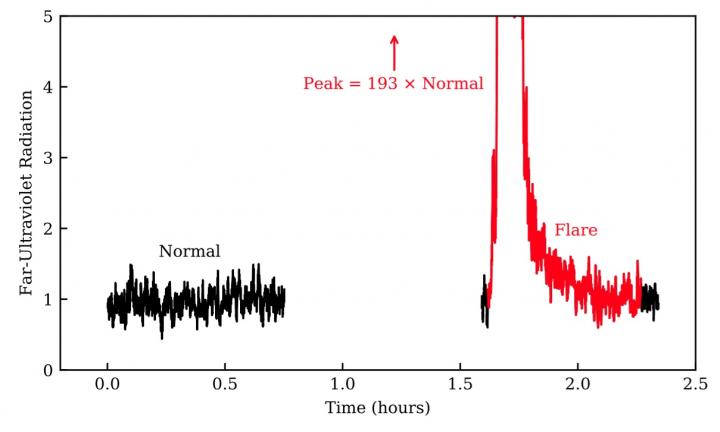Superflare from red dwarf observed
2MASS J02365171-5203036 is a rather inconspicuous red dwarf of spectral class M2. It travels through the universe approximately 123 light years from Earth and normally has a luminosity of approximately one-thousandth of that of our Sun’s. On 9 August 2017, however, it experienced an outburst that made it noticeable even in the Hubble Space Telescope’s data: it released energy of 1.3 * 1032 erg over a very short period of time – for comparison, a typical solar eruption measures approximately 1027 erg/s.
That is a quantity that corresponds, for example, converted to food energy, to ten billion tons of bread or 100 million gigawatt hours, which was the worldwide energy demand in 2010, released from the Sun in one second.
Red dwarfs like 2MASS J02365171-5203036 often have a planetary system with planets orbiting close to their host star due to the star’s low mass. Such a superflare would be deadly for any life. The good news: 2MASS J02365171-5203036 is only 40 million years old, so it is still in its youth. It is these young stars that attract most of the attention with these super-explosions. Their excess energy is lost as they age.
Nevertheless, this youthful behavior of red dwarfs still has a big influence: superflares could, for example, easily strip away atmospheres on orbiting planets. Three-quarters of all stars are red dwarfs, and the large majority of planets orbiting them are within the star’s habitable zone. Therefore, all of these planets must have survived the violent outbursts of their stars in their youth – which certainly has consequences on the likelihood of life emerging on these planets.

